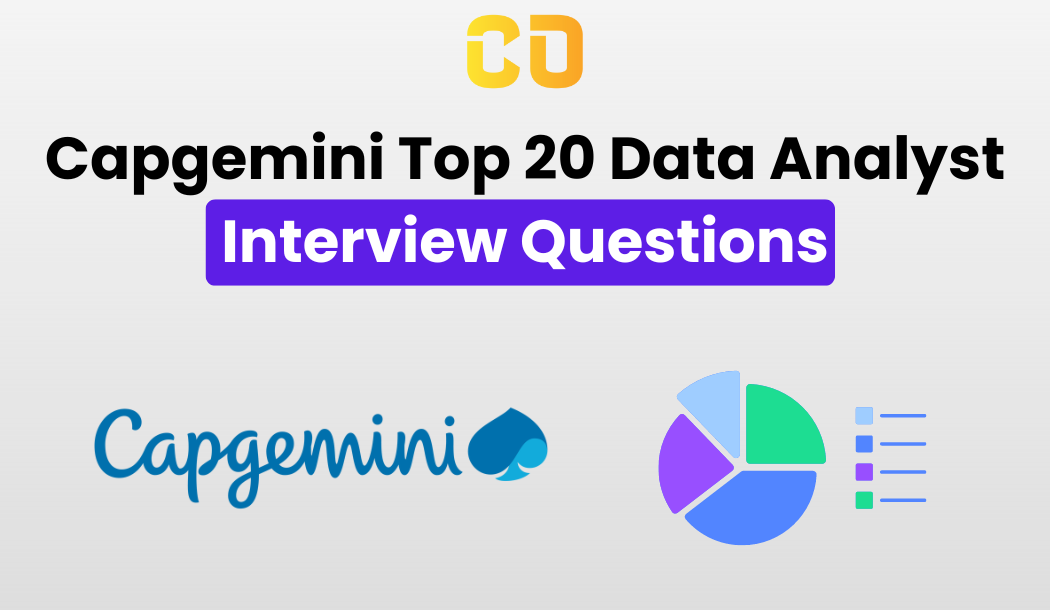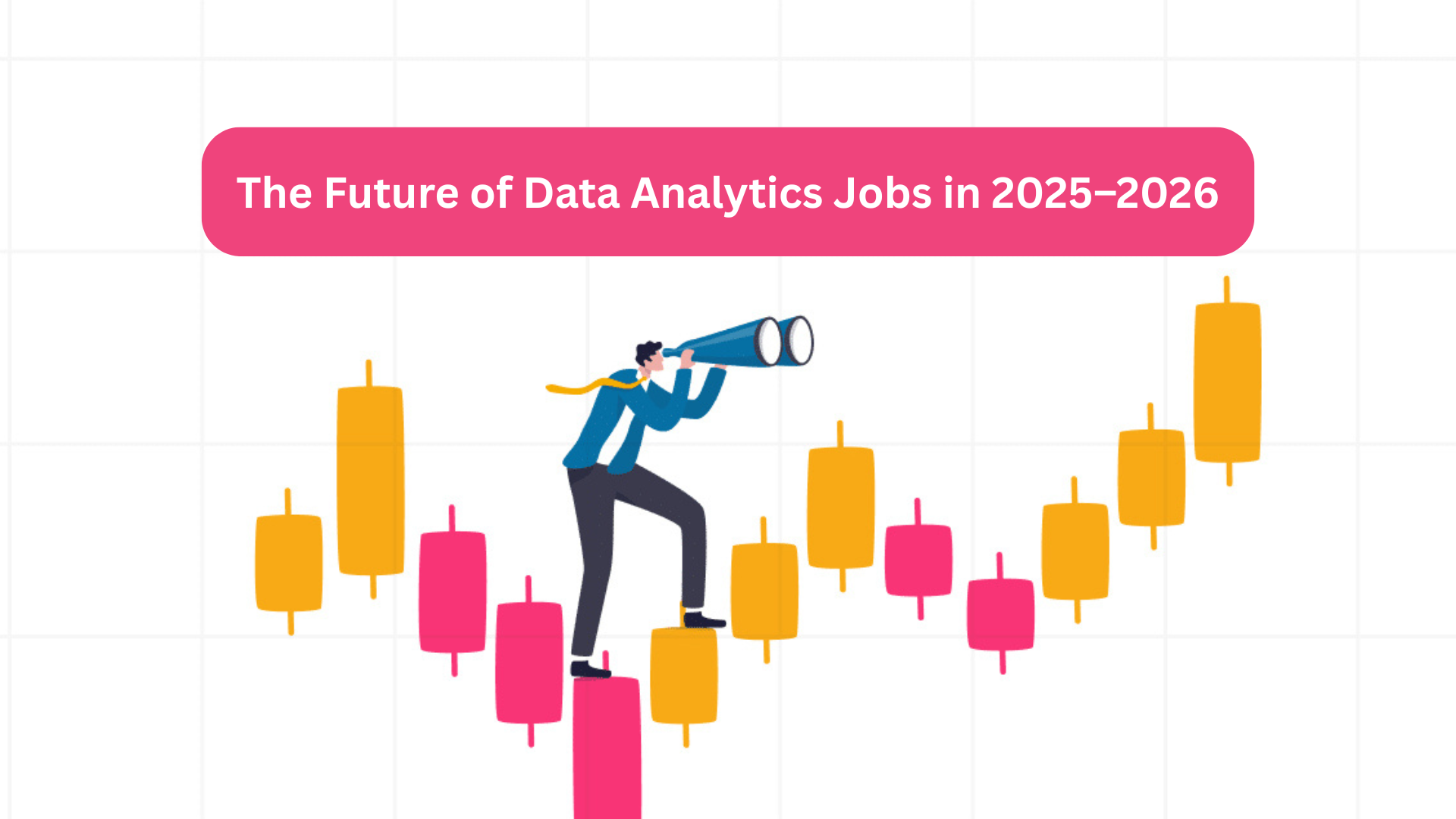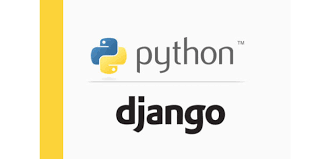As a Data Analyst at Capgemini, you'll be required to analyze large datasets, interpret meaningful insights, and contribute to business strategies. To help you prepare, we’ve compiled a list of the top 20 interview questions that you may encounter during your Capgemini interview, along with their answers.
1. What is the role of a Data Analyst?
A Data Analyst is responsible for collecting, processing, and analyzing data to help organizations make informed business decisions. They use statistical tools and data visualization techniques to interpret data patterns and trends, ultimately helping businesses optimize operations and improve performance.
2. What are the most common tools used by data analysts?
Some of the most common tools used by data analysts include:
- Excel for basic data manipulation and analysis.
- SQL for querying and managing databases.
- Python or R for advanced statistical analysis.
- Power BI or Tableau for data visualization.
- SAS or SPSS for statistical analysis.
3. How do you handle missing data in a dataset?
Handling missing data can be done in several ways, depending on the context:
- Removing rows with missing values if the data points are not critical.
- Imputation techniques such as replacing missing values with the mean, median, or mode of the column.
- Predictive modeling to estimate missing values based on other available data.
- Flagging missing data for further investigation.
4. Can you explain the difference between a database and a data warehouse?
A database is a system used to store and manage operational data in real-time, primarily used for day-to-day transactions. A data warehouse, on the other hand, is designed for analytical purposes and stores historical data from multiple sources for reporting and business intelligence activities.
5. What is the significance of data cleaning in data analysis?
Data cleaning is crucial because it ensures the accuracy, consistency, and completeness of the dataset. Poor-quality data can lead to incorrect analyses and unreliable insights, which can ultimately result in poor business decisions.
6. What is data normalization, and why is it important?
Data normalization is the process of organizing data to reduce redundancy and improve data integrity. It ensures that data is structured in a way that eliminates duplicate information and maintains consistency, which is critical for database efficiency and accurate data analysis.
7. How do you create a pivot table in Excel?
To create a pivot table in Excel:
- Select the dataset.
- Go to the "Insert" tab and click on "Pivot Table."
- Choose where to place the pivot table (new or existing worksheet).
- Drag and drop the fields into the rows, columns, values, and filter areas to summarize the data.
8. Can you explain what a join is in SQL and the different types of joins?
A join in SQL is used to combine rows from two or more tables based on a related column. The main types of joins are:
- INNER JOIN: Returns only matching rows between tables.
- LEFT JOIN: Returns all rows from the left table and matching rows from the right table.
- RIGHT JOIN: Returns all rows from the right table and matching rows from the left table.
- FULL OUTER JOIN: Returns all rows when there is a match in either left or right table.
9. What is data visualization, and why is it important in data analysis?
Data visualization is the graphical representation of data to help stakeholders understand complex datasets quickly and efficiently. It is important because it allows decision-makers to see patterns, trends, and outliers that may not be apparent in raw data.
10. How do you perform data validation?
Data validation ensures that the data entered into a system meets specific criteria for accuracy and quality. Methods include:
- Range checks: Ensuring that values fall within a predefined range.
- Consistency checks: Verifying that data is logically consistent (e.g., dates in order).
- Data type checks: Ensuring that the data type (e.g., numeric, text) matches the expected format.
11. Explain the concept of data modeling.
Data modeling is the process of creating a visual representation of a system's data. It involves defining the structure, relationships, and constraints of the data within a database. Common data models include:
- ER diagrams (Entity-Relationship diagrams).
- Relational models which organize data into tables.
12. What is the difference between supervised and unsupervised learning?
- Supervised learning involves training a model on labeled data, where the output is known, and the model learns to predict outcomes (e.g., regression, classification).
- Unsupervised learning involves working with unlabeled data, where the model tries to find patterns or groupings in the data (e.g., clustering, association).
13. How would you approach a project with a large, unstructured dataset?
I would follow these steps:
- Understand the data and its business context.
- Clean and preprocess the data to ensure quality and consistency.
- Structure the data into a manageable format (e.g., tables).
- Use data analysis tools to extract insights and patterns from the data.
14. What is ETL in data processing?
ETL stands for Extract, Transform, Load. It is the process of:
- Extracting data from various sources.
- Transforming the data into a usable format (e.g., cleaning, aggregating).
- Loading the data into a target database or data warehouse for analysis.
15. How would you explain data mining to a non-technical person?
Data mining is the process of analyzing large datasets to discover patterns, trends, and relationships that can help businesses make better decisions. It’s like finding hidden information in a sea of data to uncover valuable insights.
16. What are some common statistical measures used in data analysis?
Some common statistical measures include:
- Mean (average): The sum of values divided by the count of values.
- Median: The middle value when data is sorted.
- Standard deviation: A measure of how spread out the values are.
- Variance: The average squared deviation from the mean.
17. How do you assess the quality of your analysis?
I assess the quality of my analysis by:
- Ensuring data accuracy through validation and cross-checking with source data.
- Verifying assumptions made during the analysis.
- Using visualizations to ensure the results align with the expected trends.
- Peer reviews and seeking feedback from team members.
18. What is your experience with big data tools?
I have experience with big data tools such as:
- Hadoop and Spark for distributed data processing.
- NoSQL databases like MongoDB and Cassandra for handling unstructured data.
- Kafka for data streaming and real-time analytics.
19. How do you stay updated with industry trends in data analytics?
I stay updated by:
- Reading blogs and articles from leading data science platforms.
- Participating in webinars and conferences.
- Engaging with data science communities and forums.
- Taking online courses to learn new tools and techniques.
20. How do you ensure that your analysis drives business decisions?
I ensure that my analysis is:
- Aligned with business objectives by understanding key stakeholders' goals.
- Actionable, offering clear recommendations based on insights.
- Supported by data, using accurate and reliable data sources.
- Presented in a concise and understandable format using visualizations and summaries.
Conclusion
Preparing for a data analyst role at Capgemini requires a strong foundation in data analysis techniques, tools, and best practices. These top 20 interview questions and answers will help you sharpen your knowledge and confidently approach the interview.
Good luck!








Add a comment: